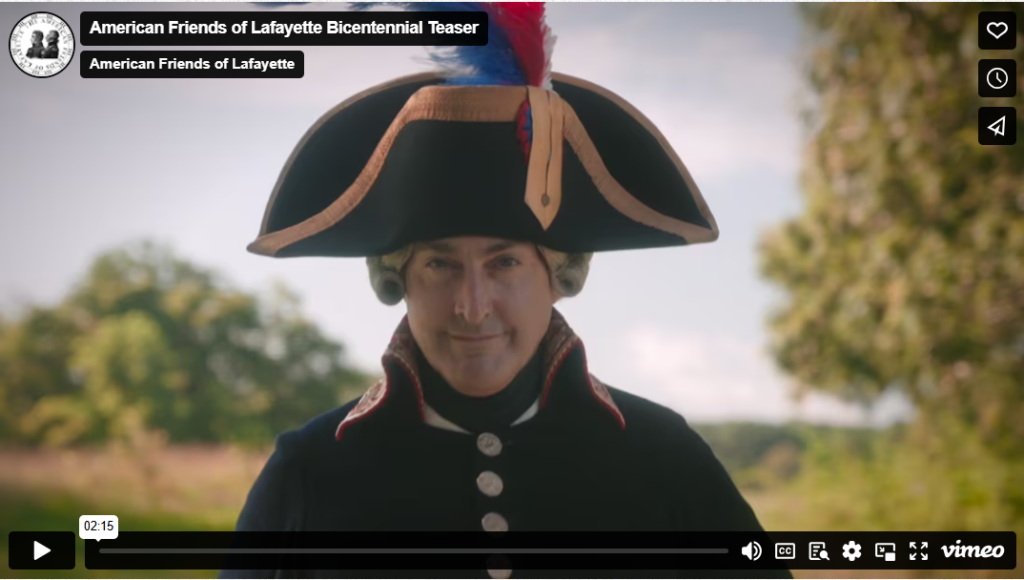May 2025: The Bicentennial of the Marquis de La Fayette’s Visit to Ohio
By Erin Augenstein Executive Director, Northwest Territory Museum Society, Campus Martius and Ohio River Museums
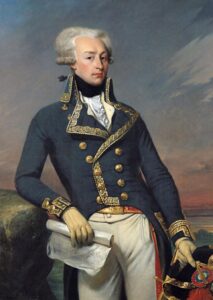
“He is dangerously amiable, sensible, polite, affable, insinuating, pleasing, hospitable, indefatigable, and ambitious,” Abigail Adams once wrote of the Marquis de Lafayette.
A Guest of the Nation – 1825 Visit to the United States
It’s no surprise that President James Monroe invited the Marquis de La Fayette to be “The Guest of the Nation” as the United States approached its 50th year. As the Revolutionary Generation was passing, the second generation were now growing our country, and in part, defining what democracy looked like. The Revolutionary Legacy looked very different to the divided cultures and communities of the United States, and as the last of the “Founder Presidents,” Monroe felt great pressure to unify the nation.
And so in a letter sent to the Marquis in February of 1824, the President stated that he called upon Congress to “send a frigate to some port of France, to receive and bring” him back to the country of his “adoption in early life, which has always cherished the most grateful recollection” of his service. Lafayette responded that, “the summer will not be over before I enjoy the delight to find myself, under an American flag, on my way to the beloved land of which it has been my happy lot to become an early soldier and an Adopted Son.”
Lafayette’s Ohio Legacy
Years before the adopted son returned to his beloved United States, Ohio was among several states to name counties after these two remnants from the Founders’ Generation – Monroe and Lafayette – and whose families had built a special long-term relationship that traced back to the Revolution. Fayette County, named for the Marquis, was established in 1810, and Monroe County in 1815.
Picture it: The United States of America, 1824
There were 24 “United” States at that time, with the 25th not to be admitted for another 12 years. The two states most recently admitted were Missouri and Maine in the Missouri Compromise, where Missouri was admitted as a slave state and Maine as a free state.
Fifty years after the Revolutionary War, and just about two months before he sent his invitation to Lafayette, President Monroe delivered what would become known as The Monroe Doctrine, affirming to Congress that the American continents are, “not to be considered as subjects for colonization by any European powers.”
Just days before sending his invitation to Lafayette, Monroe spoke again to Congress, stating that Native American Tribes must be removed from land east of the Mississippi for their own good, because they refused to assimilate into American culture.
Lafayette Arrives on U.S. Shores
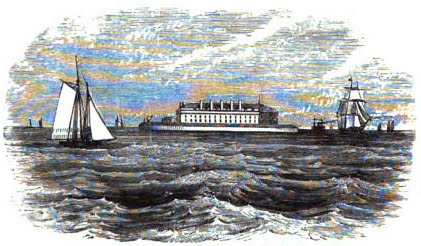
Lafayette, then 67 years old, arrived to the United States aboard The Cadmus, on August 15, 1824 in Staten Island. All of New York Harbor welcomed the General with booms from cannon blasts on the harbor, a 100-rifle salute from Fort Diamond, and the booming voices from a crowd of about 50,000 grateful Americans.
In New York, as in other locations throughout the country, General Lafayette was met with huge parades, beautiful banners, extravagant dinners and banquets, even a hot air balloon aloft. At least 20 pieces of newly composed music were performed around the country to honor his arrival.
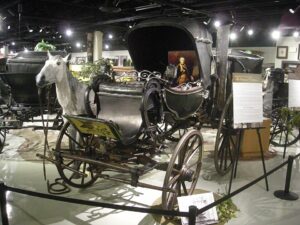
Throughout his 13-month tour, the General made requests to visit with old friends, and widows and children of those friends who had since died. He was generous with his time, stopping to speak with many. Newspaper articles recall visitors saying to Lafayette, “Sir do you remember…?” And he always did seem to remember, recalling soldiers’ bravery as if the battles had happened only recently.
Lafayette toured with his secretary, Auguste Levasseur, who kept notes of the trip while also sending reports overseas to be published by the French press. Most of the primary source documents that are used today to study the tour are those writings by Levasseur, letters written by Lafayette himself, and local newspaper articles from his visits.
Lafayette and Levasseur were using their Trans-Atlantic press releases to have news of his visit printed in the French newspapers, but others in the US were also using the press to call attention to the hypocrisies existing in the country. Letters to the editor, pieces of poetry, and early editorial cartoons were commonly printed in newspapers both before and after his arrival to a community.
A Visit to Ohio – May 1825
In May 1825, Lafayette was scheduled to travel up the Ohio River by boat to Cincinnati, and then over land through Chillicothe, Columbus and Zanesville before heading on to Pittsburgh, as he was to lay the cornerstone of the Bunker Hill monument on the 50th anniversary of the battle on June 17.
He had been traveling upriver onboard The Mechanic, a steamboat built along the Muskingum River near Marietta, when the boat struck rocks during the night, and sunk. Although all aboard were rescued, several thousands of dollars, trunks, desks, clothing and more were all lost in the dark of night.
The group’s tour, now delayed to await a replacement boat, was forced to adopt a new route. The decision was made to stay on the river, and Lafayette and company then continued to Gallipolis and Marietta before visiting Wheeling, followed by Pittsburgh. He would conclude the tour in September after having visited all 24 states.
A Life Dedicated to Principles of Freedom for All People
“I would never have drawn my sword in the cause of America, if I could have conceived that thereby I was founding a land of slavery.”
The Marquis joined our Revolutionary War because he believed it to be a noble cause. Lafayette was also an abolitionist, but his return to the United States in 1824 only highlighted our nation’s continued perpetuation of our system of slavery in the South, as well as the significant pressure for Indian Tribes to leave their lands, both North and South.
But Lafayette’s involvement with the American Revolution included all of the soldiers who fought and died for the new Republic and he hoped America would acknowledge the service and sacrifice of the Native American and Black soldiers just as he did: with respect and reverence. In a letter to an American politician, Lafayette said, “I would never have drawn my sword in the cause of America, if I could have conceived that thereby I was founding a land of slavery.”
Lafayette 200 – The Commemoration of the Bicentennial of Lafayette’s Farewell Tour
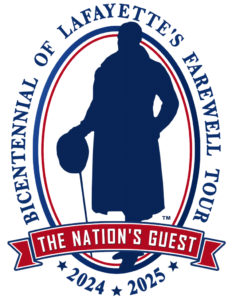
The American Friends of Lafayette is an historical and patriotic society dedicated to the memory of Major General Gilbert Motier, Marquis de La Fayette and to the study of his life and times in both America and France. Lafayette 200, or the commemoration of the Bicentennial of Lafayette’s Farewell Tour, follows his path from 1824-25, with celebratory events in each city he visited exactly 200 years after his original tour.
The goal of the events is to Celebrate, Commemorate, and Educate, with an emphasis on Human Rights, the Franco-American Alliance, and the importance of linking the past to the present. Each community Lafayette visited has a planning group charged with retracing and re-enacting his steps in their community as best can be done.
Ohio Celebrates the Bicentennial of Lafayette’s Visit
General Lafayette visited only three communities in Ohio: Cincinnati, Gallipolis, and Marietta, from May 19-23, 1825. Each city has been planning its own events, ceremonies, and dedications for some time, including both free events and ticketed gatherings. It is our hope that Ohioans will choose to visit one of our towns for our celebrations and educational offerings, taking an opportunity to appreciate the beautiful relationship our nation has had with France for centuries, and to pause to see our nation through the eyes of the Marquis de Lafayette.
Lafayette 200 Events in Ohio:
Cincinnati
May 19, 2025, 11 a.m.
Welcome Lafayette at Riverfront Landing Historic Marker, Proceed to View Lafayette Artifacts at Masonic Center, Cincinnati, OH
Riverfront Public Landing by the American Queen Paddle Wheel sculpture, followed by Cincinnati Masonic Center 317 East Fifth Street, Cincinnati, OH 45202
May 19, 2025 6:30 p.m. – 10:30 p.m.
Lafayette Celebration Dinner and Ball, Cincinnati, OH
Cincinnati Masonic Center 317 East Fifth Street, Cincinnati, OH 45202
May 20, 2025 10:30 a.m. – 12:30 p.m., reception to follow
Tribute to Lafayette and Fanny Wright, sponsored by Alliance Francaise de Cincinnati, OH
Spring Grove Cemetery and Arboretum, 4521 Spring Grove Ave. Cincinnati, OH 45232
Gallipolis
May 22, 2025 12:00 p.m. – 2:00 p.m.
Lafayette Bicentennial Day
Gallipolis City Park, 334 Second Avenue, Gallipolis, OH 45631
Marietta
May 18, 2025 1:00 p.m. – 3:00 p.m.
1:00 p.m. Dedication of Mariette’s new marker on The Lafayette Trail
2:00 p.m. Julien Icher of The Lafayette Trail speaks at The Betsey Mills Club. Reception Follows.
May 23, 2025 9:00 a.m. – 8:00 p.m.
Lafayette Day
9:00-11:00 AM – Join the Marquis on a Brunch Cruise aboard the Valley Gem. This is a ticketed, paid event. Click here for more information and to purchase tickets.
11:00 AM – Welcome the Marquis at the Levee! Music, cannons, poetry, special words from special guests, a Proclamation from the Mayor, and more. This event is FREE and Open to the Public.
2:00 PM – Memorial Day Event with the Sons of the American Revolution at Mound Cemetery. More information coming soon.
6:00 PM (Doors Open)- The Lafayette Ball at The Vault. Music, dancing, and wonderful food! This is a ticketed, paid event, with a limit of 100 tickets sold. Click here to purchase tickets.
